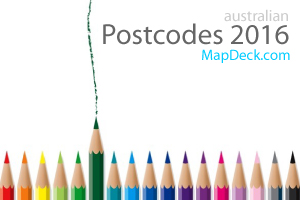Geocoded geographic coordinates of points of interest can be adjusted manually by repositioning location marker on the map (latitude and longitude will be updated from corresponding map coordinates). Address and accuracy code details can also be edited manually before saving the record. All saved records can be processed into CSV, KML or GeoRSS output format on completion. Individual records in input data are identified with a sequence number which is maintained throughout the entire process to facilitate easy reconciliation of output file with original information.
Geocoded information is classified according to accuracy, eg. “address level accuracy”, “street level accuracy”, “town/ city level accuracy” etc. Counts of records in each accuracy level are maintained during the process and all saved points can be previewed on the map at any time.
Address validation is a 3 step process:
Step 1. Paste list of address or locations to be geocoded and validated into a text area in “Input” tab and click “Press to Start/ Reset!” button to initiate the process.
Step 2. Edit geocoded information in “Edit” tab and save the result (one at a time). “Save” button saves current record and geocodes the next from the input list. Any text and accuracy code edits will be saved as well. Use “Next” button to skip to the next record on the input list without saving (skipped record will not be included in the final output file).
Step 3. Generate output from saved records to reconcile with the original information. CSV is the most obvious choice for updating original dataset. Although KML and GeoRSS outputs generated by the tool can be used with Google Map or Google Earth without further edits, it is recommended that you update content of at least "title" and "description" elements to improve presentation of the information.
Useful tips:
- Include “country” field in the input data to improve geocoding accuracy if you are getting too many results from incorrect parts of the globe.
- You have a chance to preview saved locations and to make final positional adjustments by selecting any of the options from “Show saved records by accuracy:” pull-down menu in “Edit” tab. Please note, all makers displayed on the map can be moved however, any changes in latitude and longitude coordinates will be saved automatically and cannot be undone.
- Composition of address detail will differ depending on geocoding accuracy level. For ease of further processing, avoid mixing various accuracy levels in the final output file if you intend to split address details into components.
- Geocoded address information is written into CSV file as a single text field but it can be split further using spreadsheet's “Data/Text to Column” function if you require individual address components as separate fields.
Address Validation Tool is a replacement for my earlier application - Bulk Geocoder - which was also built with Google geocoding engine. Since Google terms of use changed earlier this year, it is now prohibited to run fully automated batch geocoding using free Google service. To comply with those restrictions this new tool allows to geocode only one point at a time. And if I interpret the wording correctly, the information itself can only be used with Google applications.
I have submitted this application as my second entry in the MashupAustralia contest (the first one was Postcode Finder). I hope that it will be a handy resource to help improve spatial accuracy of data released for this competition and beyond. Any comments, feedback and suggestions greatly appreciated!







No comments:
Post a Comment